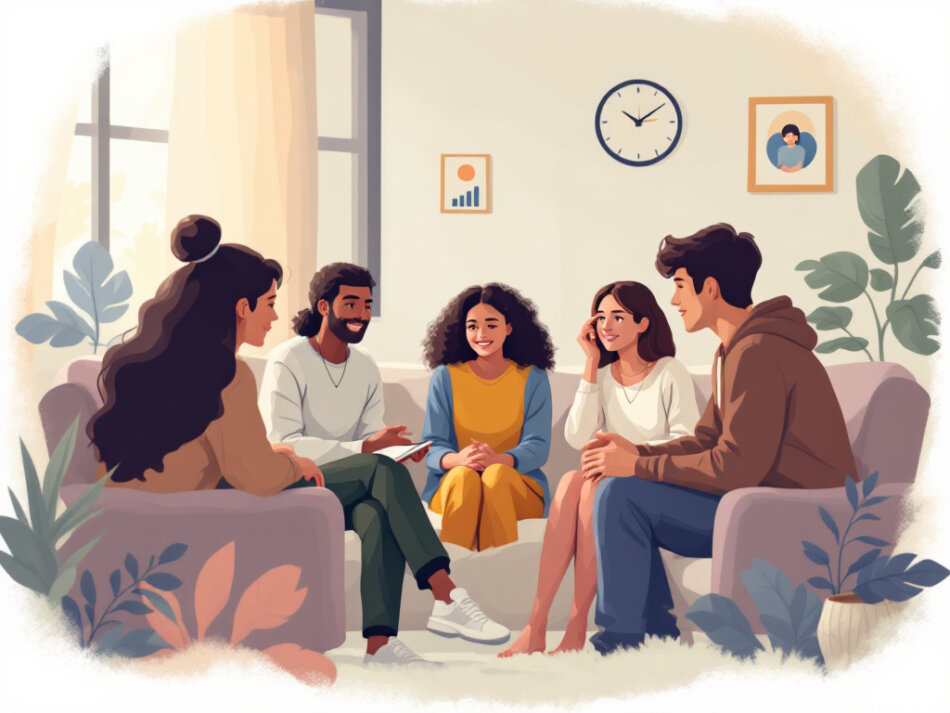When you’re exploring a holistic emotional regulation program for teens, you’re looking beyond traditional talk therapy to support your teen’s emotional health in a comprehensive way. A holistic emotional regulation program for teens blends expressive, experiential, and mindfulness-based therapies with clinical oversight to help your teen recognize, understand, and manage their feelings. By engaging multiple modalities—art, music, outdoor adventure, equine interactions, and breathwork—these programs teach your teen skills that go deeper than words alone.
These integrated programs build emotional regulation, boost confidence, and strengthen communication skills while working alongside licensed therapists and psychiatrists. Many holistic approaches are covered by insurance, so you can focus on finding the right therapeutic style for your teen rather than worrying about cost. Whether your teen struggles to open up in a counseling office or benefits from hands-on experiences, a holistic program can offer the personalized support they need.
Understand holistic emotional regulation
What is emotional regulation
Emotional regulation is the ability to recognize, understand, and constructively express and modulate emotions. For teenagers, whose brains are still developing, strong emotion-regulation skills are essential for adapting to stress, maintaining relationships, and making rational decisions when challenges arise [1]. When teens learn to pause before reacting, identify triggers, and choose healthy outlets, they build resilience that carries into adulthood.
Why holistic approaches work
Traditional talk therapy can be highly effective, but many teens need interactive experiences to stay engaged and practice new skills. Holistic programs combine evidence-based techniques—like cognitive behavioral therapy and dialectical behavior therapy (DBT)—with creative and experiential activities. This multimodal approach helps teens:
- Generalize coping strategies across settings
- Build self-esteem through mastery of new skills
- Strengthen mind-body awareness via movement and breathwork
- Honor the whole person, including physical, social, and spiritual needs [2]
By addressing emotional health in context—whether on a trail, in a studio, or with a therapy animal—holistic programs accelerate learning and foster long-term change.
Explore therapy modalities
Embrace expressive arts
Art and music therapy tap into nonverbal communication, helping teens who struggle to put feelings into words. In guided sessions, your teen might:
- Paint or draw feelings to externalize stress
- Play instruments or create rhythms to process anger
- Write song lyrics to explore identity and self-worth
These activities promote self-reflection, improve working memory, and replace negative self-talk with positive affirmations [3]. If your teen resists traditional counseling, consider expressive therapy for teens or art and music therapy for teens to create a safe, creative outlet.
Experience outdoor adventures
Adventure-based programs use hiking, ropes courses, and team challenges to build emotional regulation through real-world problem solving. As your teen navigates obstacles, they learn to:
- Manage anxiety under pressure
- Communicate clearly with peers
- Celebrate incremental achievements
Outdoor therapy strengthens resilience by placing teens in supportive yet unpredictable environments. For options that accept insurance, explore outdoor therapy and adventure programs for teens or adventure therapy for teen recovery.
Practice mindfulness and yoga
Mindfulness and movement-based therapies teach teens to observe thoughts without judgment and to ground themselves in the present moment. A typical session may include:
- Bubble Breath With Forced Exhalation: inhale for 4 seconds, exhale for 6 seconds to activate the parasympathetic system [3].
- Progressive Muscle Relaxation: systematically tense and release muscle groups to reduce tension.
- Guided meditation or yoga flows to connect breath and movement in calming sequences.
These practices improve executive function, reduce impulsivity, and increase self-awareness. Look into mindfulness and yoga therapy for teenagers or experiential dbt and mindfulness for adolescents.
Engage equine-assisted therapy
Working with horses offers powerful, immediate feedback and emotional attunement. Under professional supervision, your teen:
- Builds trust through grooming and groundwork
- Practices nonverbal communication as horses mirror emotional states
- Develops leadership and empathy skills
Equine sessions help teens feel safe expressing vulnerability and improve mood regulation. Discover programs at equine therapy for adolescents or hybrids like therapy program using equine and expressive modalities.
Combine with clinical care
Integrating with talk therapy
Holistic emotional regulation programs do not replace clinical treatment. Licensed therapists often collaborate with experiential facilitators to ensure your teen’s goals are aligned and progress is tracked. You might find:
- Joint case consultations between art therapists and psychologists
- DBT skills groups that reinforce lessons learned in adventure activities
- Coordination with psychiatrists for medication management
This team-based approach ensures your teen’s emotional, behavioral, and medical needs are addressed in a seamless plan.
Navigating insurance coverage
Many holistic programs accept major insurers and out-of-network benefits. When researching options:
- Verify provider credentials and in-network status
- Ask about covered modalities, from expressive arts to outdoor adventure
- Review session limits, preauthorization requirements, and co-pays
If coverage is a priority, search for teen holistic therapy that accepts insurance or experiential therapy that accepts insurance to find programs that fit your budget.
Evaluate program fit
Define your teen’s goals
Start by clarifying what you want your teen to achieve. Common objectives include:
- Improved impulse control and anger management
- Enhanced social skills and peer relationships
- Greater self-esteem and identity exploration
- Stress reduction through healthy outlets
Having clear goals helps you match program offerings to your teen’s needs.
Assess credentials and outcomes
When comparing programs, consider:
- Staff qualifications, such as licensed therapists and certified equine specialists
- Evidence of effectiveness in peer-reviewed research or outcome data
- Sample daily schedules that balance therapy, academics, and downtime
- Alumni testimonials and family feedback
A transparent program will share metrics on emotional regulation improvement and successful community reintegration.
Build supportive environment
Strategies at home and school
Consistency across settings reinforces new skills. You can:
- Create a cool-down area at home with dim lighting, stress balls, and headphones [3].
- Encourage daily journaling or positive self-talk to identify triggers and celebrate successes [1].
- Coordinate with school staff to integrate brief mindfulness breaks, collaborative problem solving, and write-pair-share exercises that build rapport [4].
- Model healthy emotional regulation by sharing your own coping strategies and communication habits.
Foster community and peer support
Group activities strengthen belonging and accountability. Look for:
- Peer support circles where teens discuss progress and challenges
- Family therapy sessions that rebuild trust and teach parents emotion-coaching skills [2]
- Community outings—volunteering or social events—that practice regulation in real contexts
Teens who connect with peers facing similar challenges feel less isolated and more motivated to apply new skills.
Take the next steps
Choosing a holistic emotional regulation program for teens means finding a safe, engaging, and clinically supported path to lasting resilience. Start by identifying your teen’s unique needs, then research programs that combine expressive arts, adventure therapy, mindfulness, and animal-assisted interventions. Verify insurance coverage and speak with providers about team-based care models. With clear goals and the right support network, you’ll empower your teen to manage emotions, build confidence, and strengthen relationships for years to come.
For more information on comprehensive options, explore our holistic mental health program for teens or learn about our teen holistic therapy program.











